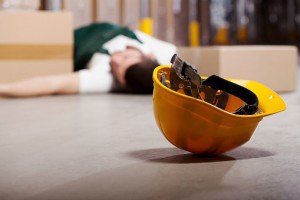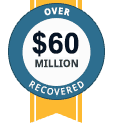OSHA’s New Slip and Fall Rule Now in Effect Increases Workplace Protection from Fall Hazards
 Getting injured at work can create many challenges in your life. At the Delaware law firm of Silverman, McDonald & Friedman, we protect your right to fair compensation when you are injured at work, or have been diagnosed with an occupational illness. We welcome your call to schedule a free consultation with a workers’ compensation lawyer in Newark, Seaford or Wilmington.
Getting injured at work can create many challenges in your life. At the Delaware law firm of Silverman, McDonald & Friedman, we protect your right to fair compensation when you are injured at work, or have been diagnosed with an occupational illness. We welcome your call to schedule a free consultation with a workers’ compensation lawyer in Newark, Seaford or Wilmington.
The Occupational Safety and Health Administration (OSHA) has a newly revised version of the slip, trip and fall rule which went into effect on January 17, 2017. The new rule will, “increase workplace protection from those hazards, especially fall hazards, which are a leading cause of worker deaths and injuries,” said the Assistant Secretary of Labor for Occupational Safety and Health Dr. David Michaels. “OSHA believes advances in technology and greater flexibility will reduce worker deaths and injuries from falls.”
This new rule clarifies previous inconsistencies between rules for the construction industry and general industry, and OSHA estimates that it will prevent 29 fatalities and more than 5,842 injuries each year. The slip, trip and fall rule will affect approximately 112 million workers at seven million worksites. OSHA is the federal agency that is responsible for establishing and enforcing rules and regulations that govern safe and healthful workplaces for employees.
Typical injuries from slip and fall workplace accidents
The U.S. Department of Labor reports that slip, trips and falls make up most general industry accidents, 15 percent of all accidental deaths; second cause after motor vehicle accidents at approximately 12,000 injuries per year. Slip, trip and fall injuries are one of the most frequently reported injuries at about 25 percent of all reported claims each year. More than 17 percent of all disabling occupational injuries result from falls most of which could have been prevented, which is why the slip, trip and fall rule has been revised and re-launched.
Examples of slip, trip and fall injuries include:
- Sprains and strains
- Bruises and contusions
- Fractures
- Abrasions and lacerations
These injuries typically occur on knees, ankles and feet, wrist and elbow, back, shoulder hip and head. (OSHA)
If an employee does sustain an injury at work, whether from a slip, trip and fall or any other cause, they must seek medical attention and report the injury to their employer immediately. Workers’ compensation is available to provide a temporary disability partial wage-replacement benefit for employees who have been injured or contracted an occupational disease in the workplace. Workers’ compensation covers the worker’s medical expenses related to the workplace accident; it provides a lump-sum payment for loss-of-use injuries, and a death benefit for workers families who have lost a loved one in a workplace accident or from an occupational illness.
The final slip, trip and fall rule allows employers to select the fall protection systems that work best for them. They will be able to choose from a range of accepted options among personal fall protection systems. Employers will be required to provide worker training systems for the use of fall protection systems and fall equipment.
The Delaware workers’ compensation attorneys at Silverman, McDonald & Friedman are here to represent the interest of our clients who are injured or ill at work. We know how to win fair compensation for you. If you have suffered an injury at work, we are here to help. To schedule your free consultation with a skilled workers’ compensation lawyer in Newark, Seaford or Wilmington, please call 302-888-2900, or fill out our contact form today.

Attorney Jeffrey S. Friedman joined Silverman, McDonald & Friedman in 2001. He graduated from Widener University School of Law, and is admitted to practice law in Delaware and Pennsylvania, and in several Federal Circuit courts. He areas of concentration include auto accident and workers’ compensation cases. Read more about Attorney Friedman here.

